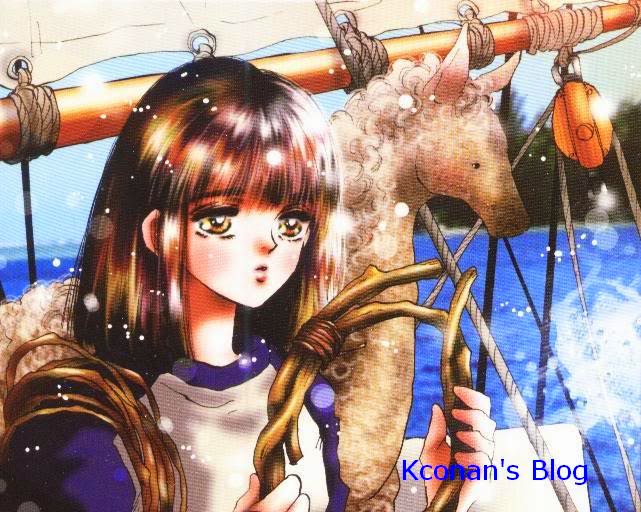This story starts off with a very interesting premise. With some sort of currency, called Dice, people can improve their abilities. Luck plays a part in it, but more importantly, having more dice means more chances and definitely more improvements in abilities, making "players" better-looking, stronger, faster, etc.
----------------------------------------
Do you like your life? Would you like to change anything about it? How much would you give to change it? This manhwa presents a very extreme view on this. When the power of the Dice became distributed to the school population, it raised a furore amongst the student body: Everyone wanted to get dice by any means necessary.
Dice are earned by completing "quests" (MMO game reference, typical of Korean Manhwa). At first, some of these quests seem very petty, like doodle on library books or insult someone. Gradually, the Game Master (calls himself X, and communicates with the players through text messages. Also seemingly omnipotent, can see everything that's going on) scales up the difficulty of the quests, asking for unreasonable things like "accidentally" spilling kerosene in the classroom, beating up 3 classmates to get some dice.
Would you still do it, knowing full well that what you are engaging it is criminal? I would liken the Dice to a forbidden fruit. After committing a small crime, the euphoria from the rewards completely overshadows all rationality, and even as each crime gets progressively unreasonable, the players are drawn along, playing to the piper's tune.
X himself said, why would there be a need to stop the chaos? He didn't come to bring peace to the world, he handed humans the knife. That biblical reference to the serpent.
But indeed, it's always through such desires that human nature is revealed, and it always brings out the ugliest in humans. Sometimes I wonder, do Humans deserve to be saved? There are many claims about God loving us all, as his children blablabla, and being all powerful. I've always wondered, for all the wrong in the world, if there was a God up there, was it all meant to happen? But that is all speculation, for no one knows the whims of moody titans and deities. Maybe they are actually demons, just like X.
Being contented with our lives is often not easy, and I think it is great that we strive to improve it. That is after all what defines us humans as a species, as we invented many things to make our lives easier and let us be lazier over the centuries, while gaining an edge over our competitors.
But as much as we desire to become better, I think that what the world really needs now, is a little bit more appreciation. Appreciate what we already have, be thankful for it. Appreciate what's around us, respect it, don't destroy it. This would not solve all the world's problems, but it'd make our world a better place. Love is about appreciation after all.
And now to rate this story.
Story: 8. Very interesting concepts, the most novel "MMO" genre story I've seen. To be fair, it deviates from the genre somewhat, but the "quests system" is definitely extracted from the genre. Psychological touch to the story, many things worth pondering about. (Read it for yourself, I thought about a lot more things, but didn't want this to become too long.) Engaging story, creates anticipation and excitement, so plus one there. I'm looking forward to following up on this manhwa.
Art: 8. My usual rating for Korean manhwa art is 5. Not sure if it's just me, but many Korean manga, especially coloured ones like Girls of the Wilds, Soul Cartel, etc, there isn't much effort and technique going into presenting the characters through their facial expressions, body language etc. Mostly, these characters are blobs on the screen, like in amateurish comics, moving around. The Korean Manhwa scene seems to have a large focus on the "ACTION" component, their battle scenes are relatively well done compared to all other components. Any facial expressions are usually crude and simplistic, and the manhwa have a tendency to make use of their coloured-medium to appeal to readers. [tl:dr] I like the careful drawings, and the expression of emotions through the body language and faces. Character design is great, the two main characters appeal. (Brooding image of main character who gains revelations upon escaping weed status +1, cute innocent image of female lead belying steadfast morals and determination +1, the design of supporting characters don't lose out either). Last but not least, organisation of manhwa in the column webtoon aids in reading. (Many other Korean webtoon manhwa have a ton of blank space, along with little inserts of some scenes or scenery, which is really irritating.)
Characters: 7. Not much to say here, characters' "personalities" were appropriately chosen, but none of the characters really stand out, except for the 2 leads, and even they aren't really unique. Since it's not enough to warrant an 8, 7 will suffice. Supporting cast pretty standard.
Enjoyment: 8. Interesting to read, no major problems. Enjoyed thinking about what the manhwa reflects about society, and whether it really is so, as well as the little (Not quite so little) plot references to the serpent, pandora's box, etc. Since I managed to finish it without pausing in between, or getting irritated, it's pretty good.
Overall: Taking the average, 7.75. I'm gonna give it an 8, and I believe that this has quite the potential to develop further.



